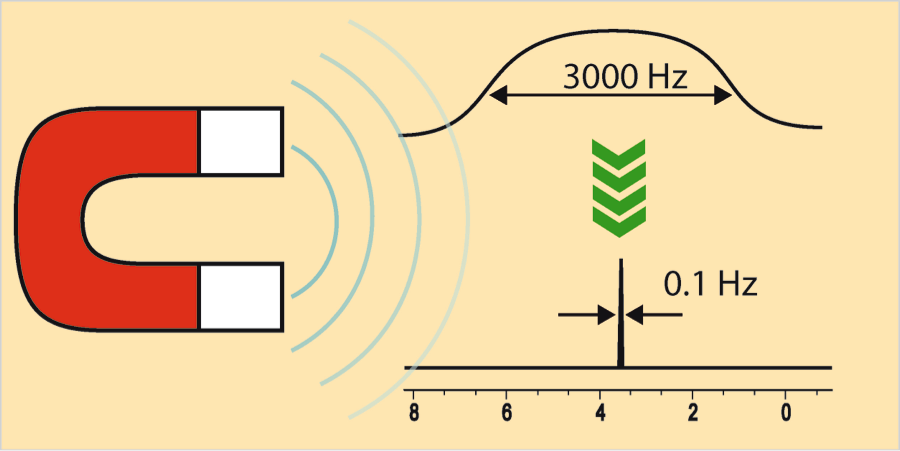Breathe In, Breathe Out
In an NMR measurement, strong and stable magnetic fields are needed to accurately determine the resonant frequencies of nuclear spins. However, sample instabilities and inhomogeneities often cause fluctuations in local fields, which is problematic for high-resolution spectroscopy. Moreover, the highest available magnetic fields can only be generated by pulsed schemes with poorer spatiotemporal stability than that found in persistent superconducting magnets. Now, in a paper in Physical Review Letters, Srinivas Chinthalapalli at the Indian Institute of Technology, New Delhi, and collaborators address this issue with a novel multidimensional NMR method called long-lived-coherence correlation spectroscopy (LLC-COSY) that acquires ultrahigh resolution NMR spectra in highly inhomogeneous or unstable fields.
LLC-COSY relies on coherent superpositions of spin states with very long lifetimes and hence very narrow linewidths. The authors’ method is insensitive to inhomogeneous broadening effects, including those due to local magnetic field fluctuations, and can reduce homogeneous broadening by almost an order of magnitude.
Breathing lungs, pulsating arteries, and surgical implants are among the unstable biological objects amenable to LLC-COSY investigations. LLC-COSY may also enable the use of the highest-field pulsed magnets for high-resolution NMR, opening unexplored frontiers to NMR research. – Matteo Rini





